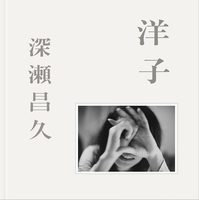$31.79
- Softcover
- 240 pages
- 180 × 255 × 20 mm
- ISBN 9784865411690
- 2023
During the 1930s, a large number of works influenced by Surrealism were shown in Japan under the heading of "avant-garde photography." Among these were works by Takiguchi Shuzo (1903-1979) who, based on his view of the photographic medium as "a deep fold in everyday reality," explored the potential of the surreal. In 1938, Takiguchi provided theoretical support for the Zen'ei Shashin Kyokai (Avant-garde Photography Association), which he formed with a group of photographers and painters.
One of the association's founding members, Abe Nobuya (1913-1971) created works in response to statements that Takiguchi had published in Photo Times magazine. Abe's works displayed a rapid shift away from the poetic sensibilities of Surrealism to photographs that documented a "new unembellished harmony" in "landscapes that have been abandoned as a useless part of the city and country." After the Second World War, Abe went on to inspire young photographers with his criticism, while exploring his own avant-garde expressions in photographs taken at various travel destinations.
Otsuji Kiyoji (1923-2001) had been involved with Photo Times during the late 1930s at the height of the Zen'ei Shashin Kyokai's activities. In about 1940, under the direct influence of Takiguchi and Abe, he began pursuing a career as a photographer. In 1958, while continuing to follow this path, Otsuji also began teaching at the Kuwasawa Design School. There, he encountered the new experimental approaches of his young students. As an educator, Otsuji broadened his perspective to include everything from his predecessors to photographers of the same era, while at the same time using his experiences as a first-hand observer of art journalism as a foundation for his work. His Experimental Workshop of Photography series signaled a dramatic change in direction with its emphasis on "Photo of Nothing Much" that focused on the commonplace.
Gocho Shigeo (1946-1983) was one of the students that Otsuji discovered at the Kuwasawa Design School. In 1967, Gocho began to major in photography on Otsuji's strong recommendation, and gradually set his sights on a career as a photographer. Otsuji also wrote forewords for two photo books that Gocho published after graduating from the school, and he keep a close eye on his former student's activities. As Gocho himself put it, he strove to make works that were "just barely photographs, something that might be overlooked," bringing a unique viewpoint to ordinary landscapes that were familiar to anyone.
This year, 2023, marks the 120th anniversary of Takiguchi Shuzo's birth, the 110th anniversary of Abe Nobuya's birth, the 100th anniversary of Otsuji Kiyoji's birth, and the 40th anniversary of Gocho Shigeo's death. While tracing the relationship between these four artists and their work, in this exhibition we hope to convey the actuality of the avant-garde photographic spirit championed by Takiguchi.
Section I
The 1930s to the 1940s:
TAKIGUCHI Shuzo and ABE Nobuya - The Rise and Fall of Avant-Garde Photography
Section II
The 1950s to the 1970s:
OTSUJI Kiyoji - Revival and Transposition of Avant-Garde Photography
Section III
The 1960s to the 1980s:
GOCHO ShigeoThe Development of Avant-Garde Photography
Contribution
OBINATA Kinichi, MATSUZAWA Hisashige, HATAKEYAMA Naoya



































